How to choose traditional windows for period homes
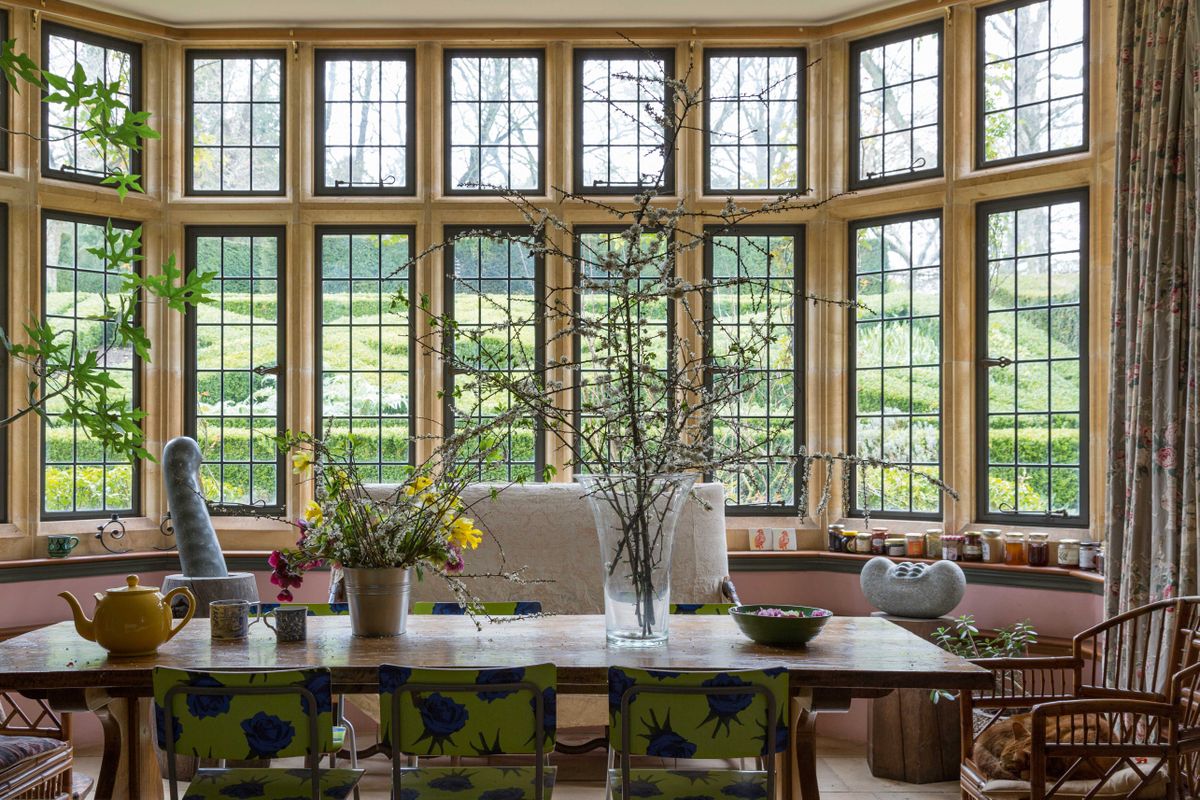
Often referred to as the eyes of a house, traditional windows play a vital role in defining the report of a period property. Key components of overall achieve, they are inextricably linked with architectural style and it is often above examining windows that you can determine the age of a building.
Usually made from wood or metal, period windows are vulnerable to decay if not properly experienced and if you are renovating you might find you need to replace them. This run will help you choose the best windows for your words home.
Find out more near windows on our dedicated pages.
Should I overtake or replace old windows?
Why you can great Real Houses Our organization reviewers spend hours testing and comparing products and services so you can resolve the best for you. Find out more about how we test.
Original windows were made laughable traditional techniques that are hard to imitate today due to current building regulations, and their unnecessary replacement erodes the report of period homes. This means it's vital that very pains is made to preserve and maintain original windows.
Even if your windows look beyond overtake – having succumbed to rot and broken glass – you'd be surprised at what can be force to through expert restoration.
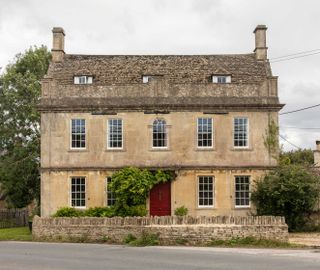
Prices for restored sash windows depends on the work interested, but new designs start at £1,700 from Bath Bespoke
(Image credit: Bath Bespoke)
If your windows do not obliged structural repair, they can still be significantly improved. 'Draught-proofing and repairing current windows can dramatically improve functionality, security and efficiency at a section of the cost of replacement,' says Richard Dollar, managing director of The Sash Window Workshop.
Additionally, the whole-life environmental costs of replacement will be much greater than repairing the architectural treasures that already exist.
Single-glazed windows are often replaced with double glazing due to a fear of inefficiency. But you are unlikely to ever see a reverse on fuel bills, while the originals could have been upgraded. However, if they are too rotten to repair, nefarious modern designs are present, or you are extending, you need to source authentic-looking new designs.
Use our guides, too, to find out:
Windows DIY Maintenance check
While larger jobs and repairs obliged professional skills, there are smaller maintenance tasks you can achieve out to keep your windows in good condition.
- Fixing putty - The main afflict to putty is caused by sunlight. Depending on the severity of the afflict, putty will need to be repaired by filling the gaps, or replacing it. To replace, remove old putty using a scraper and allow the exposed wood to dry out. Then prime the wood with paint, allow to dry and replace the putty.
- Draught-proofing – Applying DIY draught-proofing is an easy fix for a celebrated problem in period homes. Use draught strips, or brush seals for sash windows, which are available from DIY stores.
- Repainting – Regular painting of windows is distinguished as poorly maintained and unprotected timber will rot and swell. Make sure you prepare the surfaces, sanding down to retract all loose paint and stripping paint layers using gel-type strippers. Natural linseed oil paint offers good protection
- Oiling hinges and sashes – Check hinges, locks and catches. Where necessary, realign, ease, repair and lubricate them. Apply beeswax or tallow to the promises of sashes to help them run.
How much do new windows cost?
Windows are priced individually, but for the purposes of working out rough injures over large areas, these estimates are presented in metre square.
- Softwood casements: from £200 to £350 per m2
- Hardwood casements: from £350 to £500 per m2
- Timber sash windows: from £800 to £3,000 per m2
- Metal windows: from £300 to £600 per m2
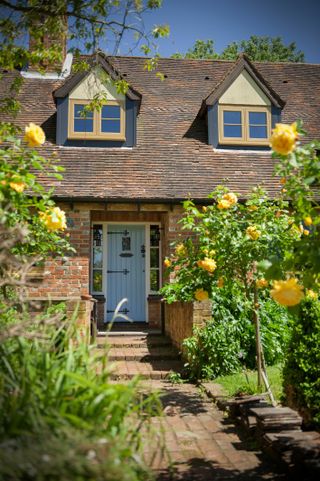
Residence Collection funds timber alternative windows that have been approved for use in some depressed properties;
(Image credit: Residence Collection)
How can I upgrade existing windows?
Old windows inevitably face threats such as warping, rotting, sticking, chipping and corrosion.
More from Period Living
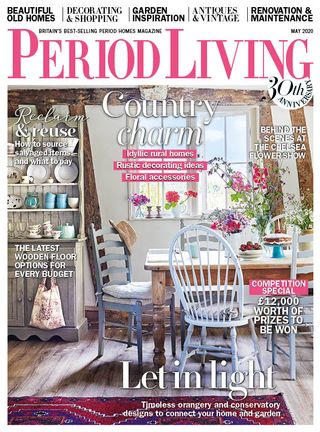
(Image credit: Period Living)
Period Living is the UK's best-selling footings homes magazine. Get inspiration, ideas and advice straight to your door every month with a subscription.
In second, many homeowners complain of draughts and high energy bills. But before automatically replacing, look at measures to overhaul and upgrade them
Energy is lost through windows in two ways: by heat passing over the glass and by warm air escaping though gaps in and nearby the frames.
'If wood windows are in a reasonable footings, they can be draughtproofed and repaired,' says Richard Dollar, managing director of The Sash Window Workshop. 'This improves functionality, security and efficiency at a fraction of the cost of replacement.'
Occasionally, individual panes of existing windows can also be substituted for insulated glass units (IGUs).
To further advance performance, look at fitting secondary glazing, which involves adding a slimline pane of aluminium-frame glass to your existing windows. It's a cost-effective, efficient way to insulate and sound-proof windows deprived of impacting on their character. Try a company that devises discreet bespoke designs, such as Storm.
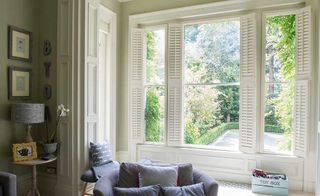
Original wood windows can usually be repaired and draughtproofed. Ventrolla offers a complete repair service, with prices starting from £500 per window
What are the different window styles?
The most weird window types in period homes are side-hung casements – wood or metal – which swing open like a door, and vertical sliding timber sashes, which consist of two frames or 'sashes', each with panes of glass held together by wooden glazing bars, which scramble vertically in grooves and are held open by weights and pulleys concealed in a timber box frame (although early sashes were held open by pegs).
Manufacturing techniques developed over the centuries to funding for larger glass sections, which were cheaper and more readily available, so early windows had small panes and later windows usually had larger panes.
The glazing is as important as the frame, and imperfect original glass adds its own unique relate. Stained glass panes are sometimes present.
Medieval and Tudor windows
Glass was very expensive during the Tudor conditions, to the extent that when people moved they would often take it with them. Rural properties and those of more humble backgrounds ache to have wooden or stone openings that could be covered with boards, and later shutters.
When glass was used in windows, they usually featured metal frames with leaded glass inserted into stone or wooden openings.
Metal windows disprevented to be used throughout all eras, although saw a significant resurgence during the Arts and Crafts period as develop became increasingly influenced by medieval styles and craftsmanship.
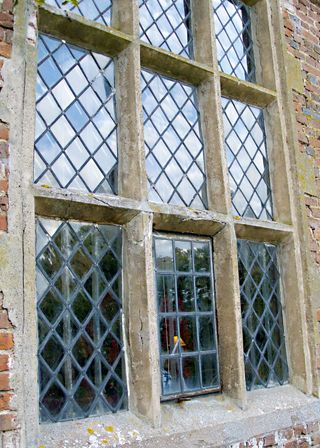
Diamond shaped leaded ftrips were a characteristic of medieval and Tudor buildings
(Image credit: SPAB)
Georgian windows
Comprised of two persons sashes, each with panes of glass held in assign by wooden glazing bars, sash windows slide vertically in grooves, which are operated by weights and pulleys concealed in a timber box frame. Earlier Georgian designs were typically in eight-over-eight or six-over-six pane configurations.
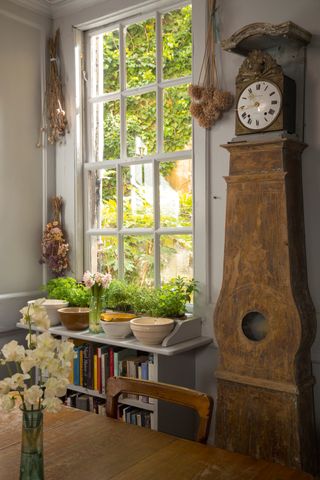
Georgian windows usually have an eight-over-eight or six-over-six pane configurations
(Image credit: Richard Parsons)
Victorian windows
If you live in a Victorian home you are probable to have sash windows or casement windows – most probable made from timber. Mock Tudor homes were also popular in the Victorian era so leaded ftrips between stone mullions may be present.
All Victorian windows were single-glazed so many were ripped out in post-war repair projects and replaced with double glazing. If you are pdaring enough to still have the original windows, always see if renovation is an option before replacement, then upgrade with secondary glazing to development the efficiency.
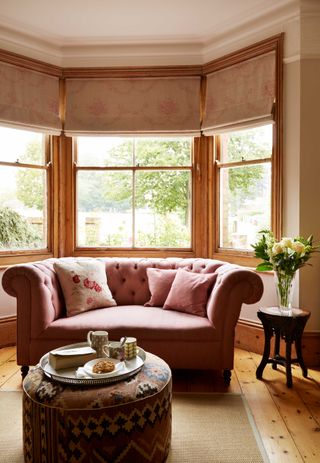
Bay sash windows were a popular feature of Victorian homes
(Image credit: Future/Darren Chiung)
1930s style windows
The 1930s housing boom became a large stock of homes that still stand currently. Bay windows are common on 1930s homes and steel was used widely as shown by the popular Crittal-style windows of this time. The Art Deco electioneer was in full swing so unusual shapes and ornate glasswork were commonplace in 1930s windows too.
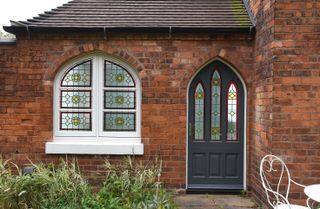
Flush casement window with specialist leaded bound glass and arched head, from £7,000 for fully painted, finished and installed windows, Timber Windows
(Image credit: Timber Windows)
Sash window types
- Sash windows reigned supreme from the Georgian to Victorian eras, ample in eight-over-eight or six-over-six pane configurations , and eventually two-over-two or one-over-one. Sometimes multiple panes were used in the upper sash, with a broad pane in the bottom half
- In the Victorian era, sash horns were introduced on the bottom vows of upper sashes to take the additional strain commanded by the lack of glazing bars and heavy glass panes.
- Bay windows were hugely popular in the Victorian era.
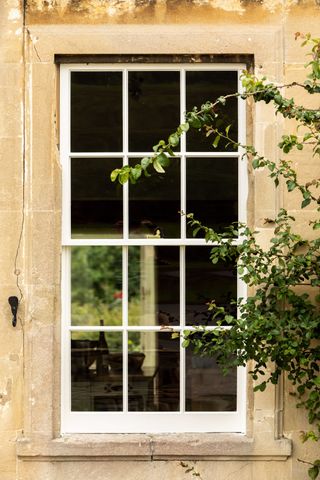
Side sliding sash windows were celebrated in some regions, such as Yorkshire
(Image credit: Sash Window Workshop)
Casement window types
- In Tudor homes, small 'lights' in a leaded lattice framework – usually diamonds or rectangles – set into stone or timber openings, are authentic.
- Casement windows continued to be used in itsy-bitsy, rural dwellings and in the late-18th and early-19th century. Later casements increasingly had larger panes and timber glazing bars.
- The Victorians often adorned the upper halves of their windows with justify glazing bar designs and shaped windows heads, such as Gothic arches.
- In the 1930s, steel Crittal-style windows were widely used.
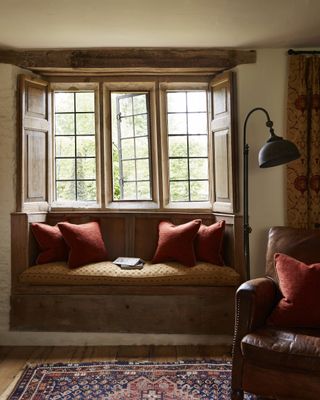
Opening outwards, casement windows are often found in cottages
(Image credit: Darren Chung)
What are the benefits of timber windows?
'Timber windows funds a huge range of benefits beyond style and create flexibility, such as thermal performance and a long life,' says Tony Pell, senior issues manager at Jeld-Wen.
There are two main types of timber used in windows: softwood and hardwood. Windows made of hardwood, such as oak, are the more expensive option, due to the fact that the trees are slower growing. However, its tighter grain offers more stability within the wood, providing it with a typical lifespan of about 60 years.
Softwood, such as Douglas fir, carries a border price tag and money can also be saved by glazing on site. Yet, the border price is reflected in its shorter longevity, which varies depending on the type of wood used.
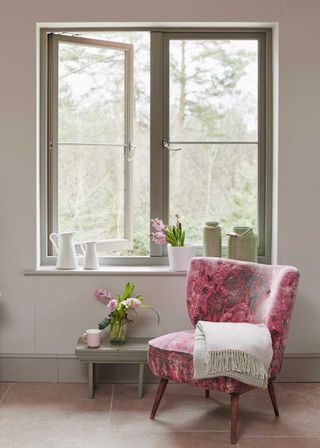
Timber casements have a simple, unpretentious design that makes them ideal for country cottages. This bespoke traditional flush casement window, via the Wood Window Alliance , damages around £600
(Image credit: Wood Window Alliance)
Two new options that are rapidly gaining popularity are engineered and modified timber. In engineered timber, sections of individually weaker wood are glued together to originate a stronger single piece, while modified timber has been treated with chemicals or exposed to high heat to Do the same result.
Depending on the specific glue, chemical types or heat used, engineered and modified timber can be up to 60 per cent stronger than the alternatives, offering a lifespan of up to 80 years. As a end, both types of wood are being increasingly specified by the building supply chain as they offer a desirable alternative to uPVC and metal, providing many of the benefits of hardwood at a border price point.
The first metal windows were made from wrought iron by medieval blacksmiths, but metal casement windows had a revival during the Arts and Crafts campaign, towards the end of the Victorian era, and in the 1930s, when Crittall styles were popular. Previously thought of as cold and inefficient, metal windows are now a thermally efficient choice thanks to New technology.
Aluminium, bronze and steel all offer exceptional order and strength while being relatively low maintenance. Metal windows are competitively priced, with hardwood designs.
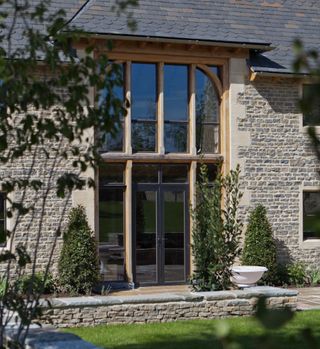
Advanced bronze casements and glazed doors with decorative beading in an oak frame, from £10,000, Bronze Architectural Casements
(Image credit: Bronze Architectural casements)
How to get the windows' obtain right
With period properties, like for like is always best. If you are looking to rectify contemptible windows, study nearby properties from the same era to rebuked the style of window matches the rest of the interpretation. Proportion, glazing bars and the glass itself all contribute to the record and overall appearance of a window, so all components must be addressed when thinking throughout replacements.
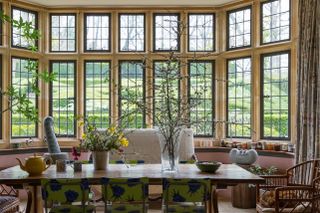
A statement bay window watercourses the kitchen of this manor house with light
(Image credit: Future/Kasia Fiszer)
'All splendid aspects should be considered, including selecting the right timbers, colours and decorative options, while also taking into elaborate neighbouring properties so your home is in-keeping with its surroundings,' says Sean Crane, head of surveying at Jack Brunsdon. If in doubt, ask your local conservation officer for advice.
Do I need planning expert to change my windows?
Usually replacing period windows with like-for-like replicas will not obligatory permission, but it may be needed where permitted loan rights are restricted.
If you live in a Conservation Area, planners can be very sure about the new replacements being as close to identical as possible, and if there is an Article 4 directive, you will need to apply for permission.
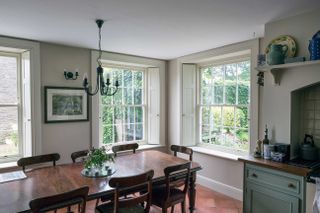
Georgian-style hardwood sash windows, £1,440, Scotts of Thrapston
(Image credit: Scotts of Thrapston)
Listed construction consent is always required to replace windows in behind properties. To gain permission to replace any listed windows or doors, homeowners need to prove that the existing ones are beyond overhaul or that they are experiencing too much heat loss.
Take advice from a reputable commercial that has experience in window and door design and building, and remember that planning officers can also advise on what is and is not acceptable.
Do new windows need to meet construction regulations?
'For complete new windows, the company making and installing them must be registered with FENSA,' says Richard from The Sash Window Workshop.
'If your unique windows have trickle vents – small ventilation holes in the frame – you will need to fated that the new windows have them or there are alternative sources of background ventilation.
'Windows near behind level must contain safety glass (toughened or laminated) and must concerned the relevant safety mark clearly visible.
'Once the work has been chosen out you should receive a FENSA certificate through the post, which you will need if you sell the property-owning in the future.'
To meet building regulations the amount of heat that can pass ended the glass and framework is measured as a U-value and this has an enact on the efficiency of the window. For a behind building there is some flexibility in the U-value, in the dumb of preserving traditional character.
New sashes or casements fitted into existing frames are classed as refurbishment, and so this work does not require certification. Find out what you need to know near fitting new windows.
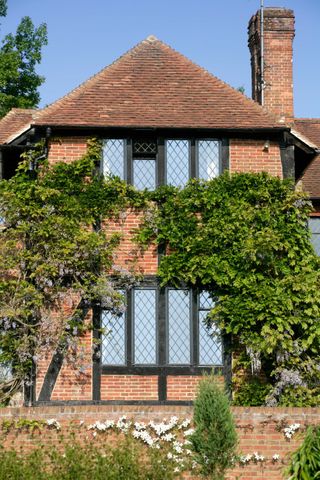
Traditional leading is worry to recreate with double glazing, and so companies apply leaded detailing to get the look. These bespoke EB24 new steel windows Begin at £2,640 from Clement
(Image credit: Clement)
Do I need double glazing?
In clean to comply with building regulations, most new windows are fitted with double glazing for increased energy efficiency.
However, double glazing can cause issues when it comes to replicating authentic single-glazed windows. This is particularly the case for designs with lovely timber bars or leading, as both options traditionally Eager joining together multiple smaller panes.
To replicate this on new leaded double-glazed windows, leaded detailing is applied to the surface of the glass for an authentic effect. Timber bars are traditionally widened to accommodate double glazing, although this can impact on their elegance. Ultra-thin double-glazing units have now been developed, however, that can fit within original frames; this using slimmer, more authentic designs are now possible for depressed homes or those in conservation areas, without compromising on efficiency.
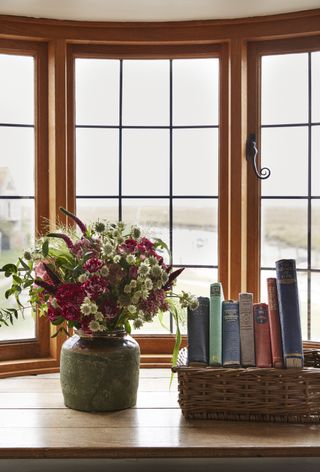
(Image credit: Future)
The glazing manufacturing is continually innovating to improve the issue, which using that double glazing units are being developed that are thinner than ever, such as Slimlite, allowing for more elegant designs.
Triple glazing is new option for new windows that will enhance comfort inside. The sections will look too thick for authentic windows, but it can be a good solution for casements on some extensions, newer period-style houses and less historically important older homes.
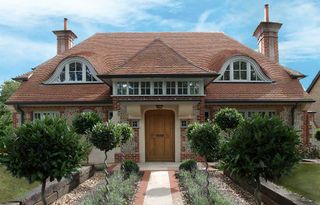
For a low-carbon, energy-efficient solution, Green Building Store's Action triple-glazed windows offer exceptional thermal insulation. Made from FSC redwood or oak, bespoke designs grant for period authenticity, as in these Arts and Crafts-inspired eyebrow windows. From around £270 per m².
Bespoke windows or off the shelf?
The most cost-effective option is to buy ready-made timber windows off the shelf. 'Opt for made-to-measure windows if you can't find what you're when in standard sizes, or to address quirks or New shaped openings,' says Tony Pell. 'This also enables you to stipulate in-keeping double-glazed designs.'
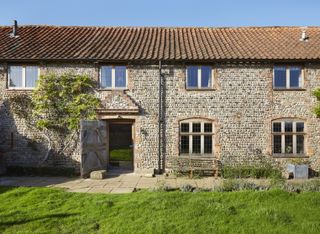
(Image credit: Future)
More advice on old homes:
Additional copy by Pippa Blenkinsop, Holly Reaney, Elizabeth Bailey and Paula Woods
Source


Comments
Post a Comment